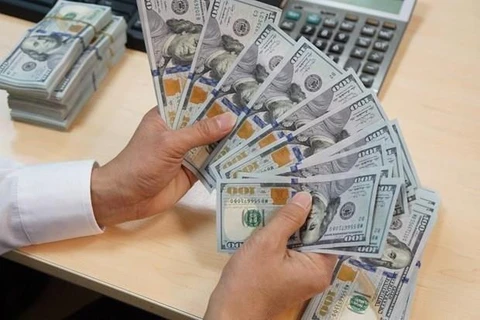Hanoi (VNS/VNA) – Vietnam is expected to remain one of the top ten remittance receivers in 2019, according to the latest edition of the World Bank’s Migration and Development Brief released recently.
A sum of 16.7 billion USD in remittances was projected to flow into Vietnam for the full year, making the Southeast Asian country the ninth largest remittance receiver – in dollar terms – in the world.
The value inches up against 16 billion USD in 2018 and accounts for some 6.4 percent of the country’s GDP.
In East Asia and Pacific region, Vietnam is expected to rank third in terms of remittances after China and the Philippines.
Financial and banking expert Nguyen Tri Hieu said that the country’s high remittance flow was mainly because Vietnamese people working abroad believed in the stability of the economy and saw better investment opportunities in the domestic market.
He said that remittances to Vietnam were largely used to invest in production, business and the real estate market.
“The central bank’s policy to keep zero interest rate for deposits in US dollar will encourage remittances into Vietnam to be used for investment rather than being kept in banks,” Hieu said.
Remittances to Vietnam have kept rising for the past two decades, from more than 1.3 billion USD in 2000 to 16 billion USD last year (except the year of 2009 due to adverse impacts of the global financial crisis).
According to the WB’s brief, in 2019, the top five remittance recipient countries are projected to be India (82.2 billion USD), China (70.3 billion USD), Mexico (38.7 billion USD), the Philippines (35.1 billion USD) and Egypt (26.4 billion USD).
Remittance flows to low- and middle-income countries are expected to reach 551 billion USD in 2019, up by 4.7 percent compared to 2018. Remittances have exceeded official aid – by a factor of three – since the mid-1990s. This year, they are on track to overtake foreign direct investment (FDI) flows to LMICs.
This year, remittances will increase moderately in South Asia (5.3 percent), Sub-Saharan Africa (5.1 percent) and East Asia and Pacific (3.8 percent) due to the buoyancy in inflows from the US being offset by slower growth of receipts from the Euro area and the Gulf Cooperation Council (GCC).
Growth of remittance flows slowed to 4.7 percent in 2019 compared to a robust 8.6 per cent in 2018, the brief noted, adding that cyclical factors affecting the growth of remittance flows include economic growth in source countries, oil price and variations in exchange rates.
According to the brief, assuming that outward remittances growth in tandem with the nominal GDP (in US dollar terms) of the source countries, these flows are projected to reach 574 billion USD in 2020 and 597 billion USD by 2021.
This forecast methodology is conservative, as it does not account for increasing migration flows, falling remittance costs, and progress in the technology of remittance services, the brief noted./.
VNA
























